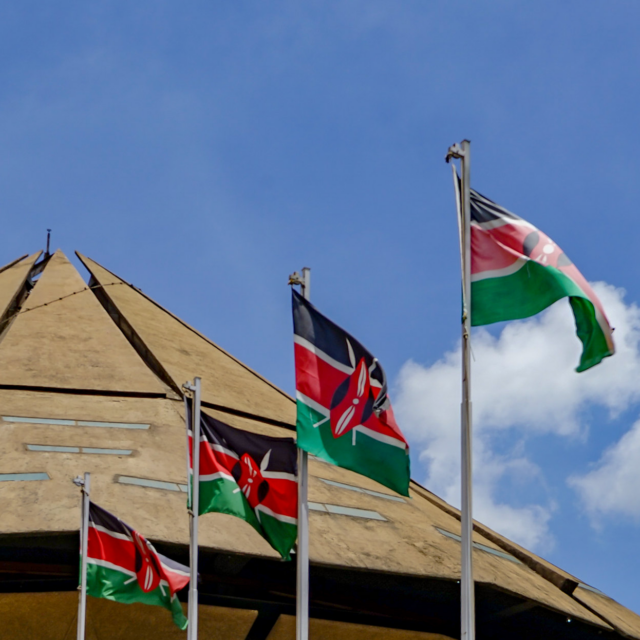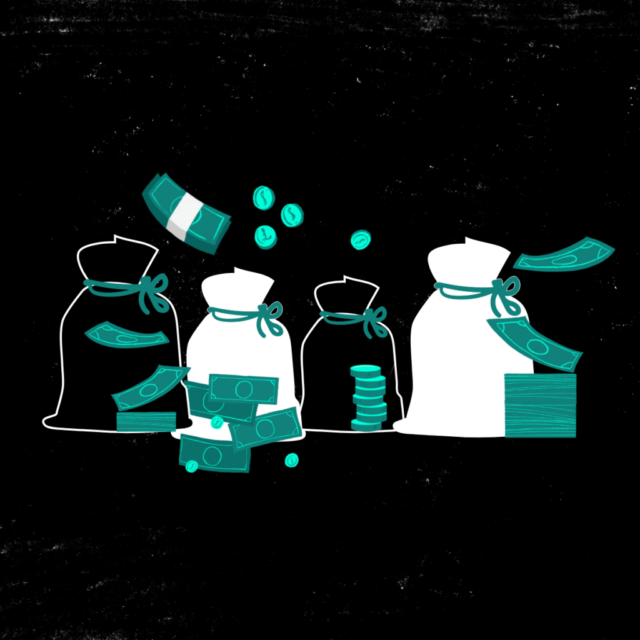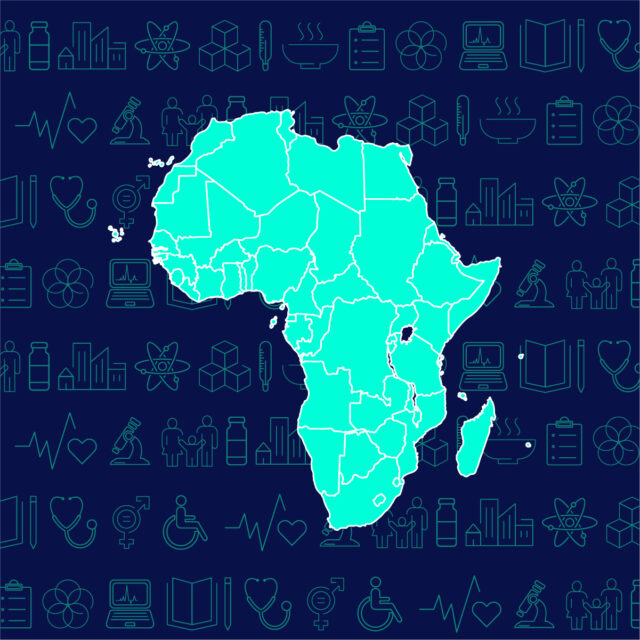Last year, Njeri, a hawker in Nairobi, was paying 90 shillings (roughly $0.8) for a packet of maizemeal. Today the same packet goes for 120 shillings, a 30% increase. She is also paying more for non-food items, such as rent and electricity. Njeri’s rent for a single room in Kangemi, an informal settlement, increased by more than 10%, from 4,500 Kenya shillings to 5,000 Kenya shillings (roughly $44) a month, which is nearly a third of her income.
As a result of the price hikes, Njeri and her three children often miss meals. She has also decreased her consumption of electricity, preferring to use the cheaper paraffin to light her house.
Njeri is not alone. The shopping baskets of most Kenyans have become significantly smaller since the start of the COVID-19 pandemic. Lost or reduced incomes and the rising cost of living are causing significant hardships for many Kenyans. Between June 2020 and June 2021, Kenyan consumers paid 8% more for food and beverages, 14% more for transport, and 4% more for water, electricity and housing, according to data from the Kenya National Bureau of Statistics (KNBS). Inflation hit a 23-month high (6.91%) in September 2021, and is currently around 5.8%.
Although inflation caused by supply chain disruptions and the rising cost of crude oil in the international market is being felt globally, the cost of living in Kenya has been increasing significantly for at least a decade. The prices of basic commodities, such as maize flour, sugar, cooking gas, and petrol, have increased by more than 46% since 2013, according to KNBS data. And recent surveys show that the prices of most commodities, including bread, tomatoes, rice, potatoes, and meat, have been rising by between 16% and 53% since 2011.
President Uhuru Kenyatta has promised to make Kenyans’ lives a little easier by reducing the cost of electricity by 30%. But reduction in the price of electricity will most likely benefit the upper and middle classes and large businesses that use electricity the most. Low-income households that rely on the other forms of energy, such as paraffin or charcoal, will still face rising costs of food and other basic items, which are increasing every day.
Additional taxes, rising debt, and corruption
Increasing inflation in Kenya is the result of a variety of factors, including policy failures that have led to a significant rise in the cost of living. Additional and high rates of taxation, astronomical national debt, and endemic corruption have placed punitive financial strains on ordinary Kenyans. The government has not done enough to alleviate the burden.
When COVID-19 struck in 2020, the Kenyan government reduced taxes on cooking oil and gas to 14%, as part of a package of measures to help Kenyans deal with the economic shocks of pandemic. However, it reintroduced the 16% tax on cooking oil and gas in 2021, even though the country had not yet fully recovered from the economic impact of the pandemic.
The government also introduced new taxes that raised the cost of living further. It increased excise duty on airtime and telephone services from 15% to 20%. This has impacted the more than 21 million internet users and 59 million sim card subscribers who rely on mobile phones to communicate and to make and receive payments. Airtime is among the largest single expenditure item among Kenyans, so this tax increase has significantly impacted their mobile phone use.
The Kenyatta administration’s borrowing spree has added an additional load on Kenyans. By the end 2021, Kenya’s debt stood at nearly 70% of GDP, up from 50% at the end of 2015. China is Kenya’s largest bilateral creditor, accounting for 67% of Kenya’s bilateral loans (mostly for
infrastructure projects), up from 13% in 2011. In 2021, multilateral debt accounted for 41% of external loans, while bilateral debt accounted for 28%.
“Big ticket borrowing has squeezed the government’s income, which in turn has squeezed citizens to fill the gap,” says Aly-Khan Satchu, a financial analyst based in Nairobi. “The squeeze is in fact amplified at the bottom of the pyramid because people at the bottom spend most of their income on food and housing.”
Out of every dollar of taxpayers’ money, 57 cents go towards servicing the country’s burgeoning debt, according to data from the Central Bank of Kenya. Kenya’s public debt rose to Sh7.7 trillion (about $70 billion) last year – a 13-fold since 2000.
Unfortunately, much of the government revenue raised to service debts is lost to corruption. Up to 2 billion Kenya shillings (roughly $18 million) are lost to corruption every single day, a fact that even the president has acknowledged. Government ministries and departments have been implicated in various corruption scandals, including a recent one involving the state medical supplies authority, KEMSA, which was accused of flouting several laws in the awarding of COVID-19 related tenders worth about $72 million in 2020.
Corruption in Kenya has far-reaching impacts. It makes the cost of doing business and living in the country very high. The COVID-19 pandemic has exacerbated the crisis, making it much more difficult for small businesses and low-income earners to survive.
Multidimensional poverty
Kenya is considered one of the strongest economies in the Eastern Africa region. It has a vibrant private sector and a large pool of educated and highly skilled workforce. But optimistic projections of economic growth rates bouncing back to around 6% this year are not translating into a better quality of life for most.
“There is a famous refrain, ‘You can’t eat GDP,’” explains Satchu. “GDP expansion does not necessarily result in a better standard of living.”
Like most other countries, Kenya experienced a significant downturn in economic activities during the first few months of the pandemic. But the country was already on a downward spiral before COVID-19. A new report shows that the proportion of people living in multidimensional poverty began rising as far back as 2013, increasing from 38.9% in 2014 to 53% in 2018. The report defines poverty as not just lack of income, but lack of access to healthcare, education, decent housing, and other basic services.
Job losses in the formal and informal sectors and business closures have increased the number of people with no or reduced income. By the end of 2020, Kenya had gained an additional 2 million “new poor,” according to the World Bank. One survey found that more than a third of small businesses in Kenya had closed down by July last year. The businesses that survived the pandemic reported earning two-thirds of their pre-COVID revenues. This is significant because small and medium-sized businesses constitute 98% of all businesses in Kenya. And they create 30% of jobs annually and contribute nearly 3% of GDP.
In the first year of COVID-19, the United Nations warned that the pandemic threatened to reverse almost all the gains toward the 17 Sustainable Development Goals (SDGs). And while the virus had impacted everyone, the most vulnerable groups, including people living in poverty, were the most affected. “Due to unemployment and underemployment caused by the COVID-19 crisis, some 1.6 billion workers in the informal economy – half of the global workforce – may be significantly affected,” stated a UN policy brief.
The pandemic is exacerbating existing inequalities and making life much more difficult for most Kenyans. Kenya is now further away from its SDG goals of eradicating poverty and reducing inequalities than it was eight years ago.
Future shocks
Kenya is entering an uncertain and potentially polarising election year, and the economic outlook does not look very promising. Elections in Kenya are usually accompanied by declining economic activities and reduced investments as businesses and investors adopt a “wait and see” attitude in case of any election-related violence or unforeseen changes in government.
Election years also do not usher in major policy reforms, as legislators are more focused on elections than on policy changes. This means Kenyans must bear the status quo until at least the August 2022 elections. Prospects of a rapid economic recovery for Kenya and a better quality of life for most Kenyans in a post-pandemic period look increasingly grim.



